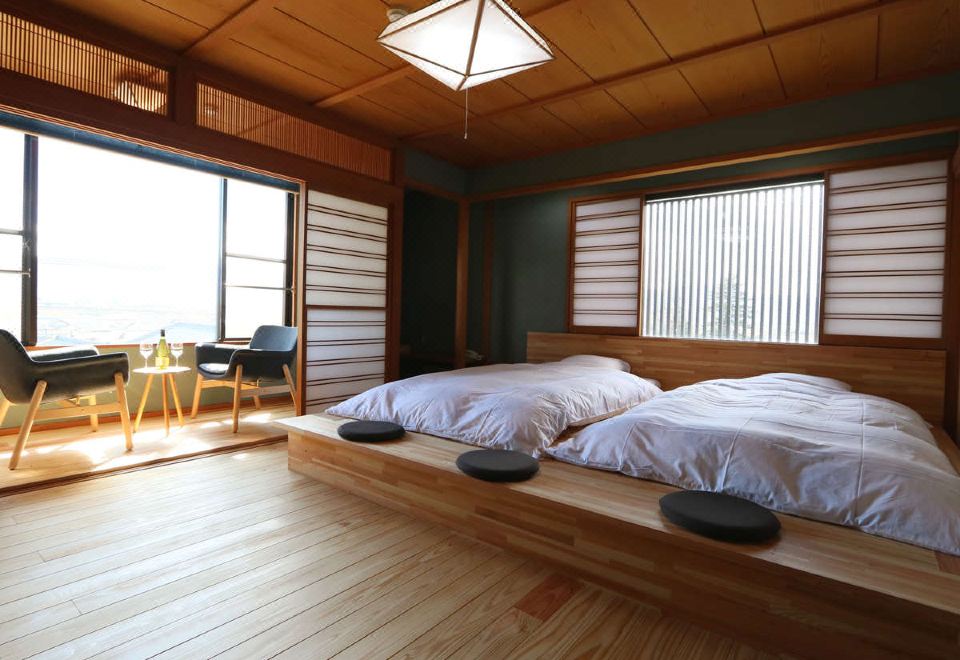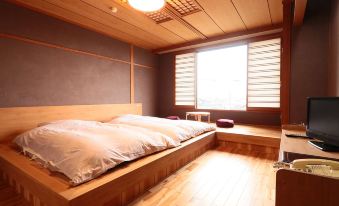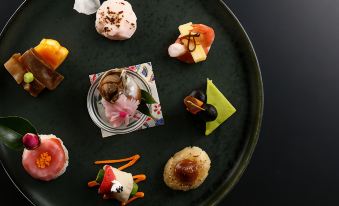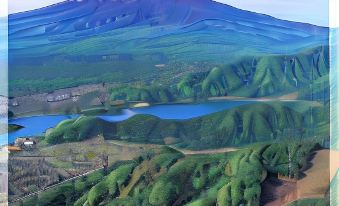Iwashita Onsen Ryokan
1 night
Rooms and Guests
1 room, 2 adults, 0 children
All Properties in Yamanashi
Iwashita Onsen Ryokan
1053 Kamiiwashita, Yamanashi City, Yamanashi Prefecture 405-0034, Japan
Show on Map
With a stay at Iwashita Onsen Ryokan in Yamanashi, you'll be within a 10-minute drive of Hottarakashi Onsen Hot Spring and Fuefuki Kasugai Local Museum Ogawa Masako Memorial. This ryokan is 18.1 mi (29.1 km) from Lake Kawaguchi and 13.2 mi (21.3 km) from Fuji-Hakone-Izu National Park.Show More
We Price Match







4/5Very Good
·Cleanliness: 4.0
All 1 Review
Amenities
ParkingFreeHot springsSmoking area
All Amenities
Surroundings
Train: JR Kasugaicho Station
(1.5 km)
Train: JR Yamanashishi Station
(3.3 km)
Landmarks: Iijima U-Pick Fruit Farm
(180m)
Map
Rooms
Guest Reviews
Policies
Services & Amenities

1
Japanese-Western Mixed
Has window
Non-smoking
Private bathroom
Check Availability

1
Japanese-Style Room with Bath
Has window
Non-smoking
Private bathroom
Check Availability

1
Japanese-Style Room
Has window
Non-smoking
Check Availability

1
Japanese-Western Mixed with Bath
Has window
Non-smoking
Private bathroom
Check Availability
Guest Reviews
4/5
Very Good
1 review
 Verified Reviews
Verified Reviews- Cleanliness4
- Amenities4
- Location4
- Service4
Average for similar properties in Yamanashi
Book now and leave a review after your stay to earn up to 120 Trip Coins (approx. ₹ 101.29). Trip Coins can be used to save instantly on room rates.

Guest User
January 6, 2023

A ryokan with unique baths and hot springs. The old building of the inn, which is said to have been built in 1873, had a semi-underground source. With a history of 1,300 years, the colorless and transparent hot water is a cold spring with a temperature of 28.2 degrees. It can also be called a spiritual spring. First, warm up your body with warm cold spring water, wrap a bath towel around your body, go down a few stairs, and enter the semi-underground cold spring bath. It is a power spot where "Yu Gongen-sama" is enshrined here. It is said that this is repeated, but to be honest, it is a little tough to go back and forth in winter. However, even in the indoor bath, there are two baths, one for hot water and one for cold water, and I used these two baths repeatedly for "hot and cold". Then, after getting out of the bath, I was warm all the time. Only the baths in the old building are open for day trips (the baths in the old building are closed on Mondays). The next morning, I went to the bath in the new building (the one with the ryokan guest rooms). There is an open-air bath and an indoor bath, but there is no cold spring bath here. The open-air bath was relatively lukewarm, so I took my time. From the window of the open-air bath and the indoor bath, the deep pink sasanqua which is now in full bloom was very beautiful. There are also facial soaps and oils in the bath. There was lotion etc. in the beautiful dressing room and wash area. The room was a beautiful 8-tatami Japanese-style room with a wide veranda. There was also a coffee machine in the room. From the room, you can see the mountains including Mt.Fuji in the distance. I woke up in the morning, but the vineyard was also spread out in the residential area. In the lobby, from 15:00 to 17:00, welcome wine was placed and I had white wine. Coffee service is available after breakfast. The food and wine are all locally sourced. I asked for Yamanashi wine, as I was asked to enjoy the marriage of "Koshu Kaiseki", which is carefully prepared with local seasonal ingredients, and Yamanashi wine carefully selected by the young proprietress. Yamanashi wines start at Y2800 a bottle for white and Y3300 for red. Serving only Yamanashi wine will also promote Yamanashi wine, and I think it's good for self-production and self-consumption. For the first time, I ordered Kizan Wine Red from a winery in Koshu City. Spicy and sour, it goes well with Japanese food. The wine grape is Black Queen. There may not be many Black Queen wines in Yamanashi. The sashimi konjac you made was delicious, and the grilled mackerel koji-yaki was delicious. The main pot sukiyaki had a lot of meat. Breakfast was a hoto, which warmed my body. It was a well-balanced Japanese meal. The inside was very clean, beautiful and comfortable. I thought it was a wonderful inn with warm hospitality and attentiveness in various aspects. In addition, the illustrations, such as how to use the hot spring cat's hot spring and the introduction of the hotel, are unique and warm.
Original TextTranslation provided by Google
Property Policies
Check-in and Check-out Times
Check-in: 15:00–20:00
Check-out: Before 11:00
Front desk hours: [Mon-Sun]09:00–21:00
Child Policies
Children aged 13 and above are welcome at this hotel.
Additional fees may be charged for children using existing beds. Add the number of children to get a more accurate price.
Cots and Extra Beds
Please contact the hotel for details about cot and extra bed policies.
Breakfast
Breakfast is available at the hotel. Please contact the hotel for details.
| Age | Fee |
|---|---|
Adult | Contact hotel |
Additional breakfast fees are not included in the total and need to be paid at the property.
Show More
Property Description
- Number of Rooms: 8
With a stay at Iwashita Onsen Ryokan in Yamanashi, you'll be within a 10-minute drive of Hottarakashi Onsen Hot Spring and Fuefuki Kasugai Local Museum Ogawa Masako Memorial. This ryokan is 18.1 mi (29.1 km) from Lake Kawaguchi and 13.2 mi (21.3 km) from Fuji-Hakone-Izu National Park.
This ryokan features designated smoking areas and hot springs on site.
The front desk is staffed during limited hours. Free self parking is available onsite.
Make yourself at home in one of the 8 guestrooms featuring refrigerators and flat-screen televisions. Bathrooms have hair dryers and slippers. Conveniences include safes and coffee/tea makers.
This ryokan features designated smoking areas and hot springs on site.
The front desk is staffed during limited hours. Free self parking is available onsite.
Make yourself at home in one of the 8 guestrooms featuring refrigerators and flat-screen televisions. Bathrooms have hair dryers and slippers. Conveniences include safes and coffee/tea makers.
Services & Amenities
Most popular business facilities
ParkingFree
Hot springs
Smoking area

Hot springs
Show More